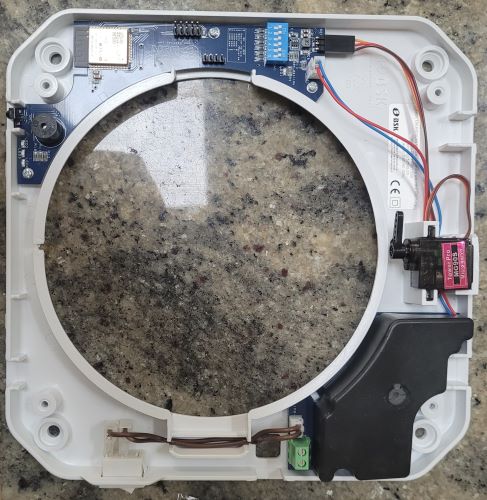Smart controlling a heat recovery unit
The kitchen in our house gets very cold. One reason was a poorly installed vent. It had a slidable open close mechanism but with a cheap warped plastic cover it made no difference. Looking at the vent in cold weather with a thermal camera I could see that it was very cold surrounding it. Opening it up further I saw that it’s 100mm pipe was not connected end to end and instead laying in a 160mm x 130mm rectangular hole.
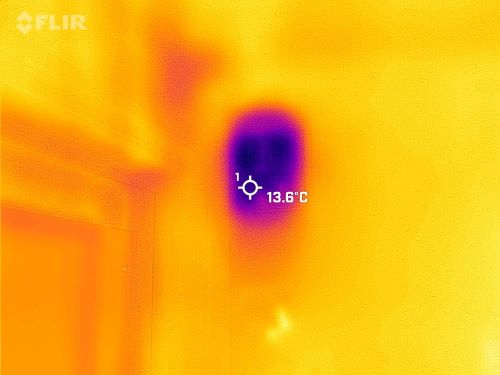
Rather than replace it with a similar but higher quality vent I looked further into what else might be available. I then came across the ZEPHYR Decentralized Heat Recovery Device.
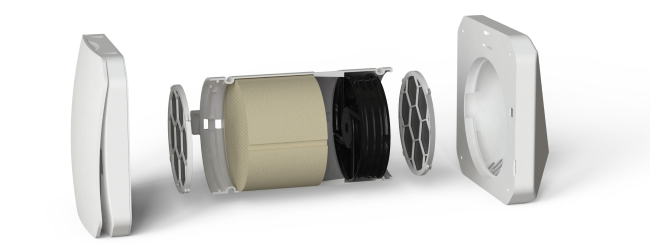
Rather than describe it myself I’ll use their own description:
“BSK Zephyr can recover heat by using a 2-way fan heating and cooling of the ceramic heat exchanger inside. The device operates on a cycle that extracts and supplies air in periods of 70 seconds. While the air is extracted out from the room, the ceramic heat exchanger will be heated, when the air flow direction is reversed and fresh air from outside is supplied to the room, thanks to the heat stored in the ceramic core, it will be blown inside in a conditioned manner. BSK Zephyr, whose power consumption does not exceed a few watts and can reach 90% thermal efficiency, also allows you to save energy while meeting your ventilation needs. You can connect multiple devices to each other via wireless communication, and you can control your devices with the included IR remote.”
I had an electrician install it as it needs power and the hole needed to be increased to fit a 160mm pipe. When not turned on a servo retracts allowing it to seal with a magnet. Along with some foam lining it insulates well and the thermal camera shows much less cold air entering.
The device has WiFi but unfortunately it is only for creating a device to device mess. This leaves the IR remote as the only way to control the device. I bought a Moes IR Blaster so I could control it from Home Assistant. I used the Zigbee2MQTT UI to learn the IR codes and then created Home Assistant Scripts for each one. One thing I found strange was that the same button learned twice would give very different codes but thankfully the ZEPHYR responded correctly in all cases.
The code for the scripts:
zephyr_power:
alias: Zephyr power
sequence:
- service: mqtt.publish
data:
qos: 0
retain: false
topic: zigbee2mqtt/0xe0798dfffe05dfff/set
payload: '{"ir_code_to_send": "CIUjkBFYAgICWGABAgICWCABAgICWCABAQIC4AEDAW0G4BUDAQICQAMFoQICAlgCwCsDAgJYAkALAwICWAJAB8ADAQICgAMBbQbgAS8Jo5uFI6oIWAL//+ACBwIIWAI="}'
mode: single
icon: mdi:power
zephyr_night_mode:
alias: Zephyr night mode
sequence:
- service: mqtt.publish
data:
qos: 0
retain: false
topic: zigbee2mqtt/0xe0798dfffe05dfff/set
payload: '{"ir_code_to_send": "BaQjixE5AuAXAQGJBuAVA8ABwCfAAUAPQAFAB0ADwAFAC0ADQAFABw+Mm6Qjswg5Av//pCOzCDkC"}'
mode: single
icon: mdi:weather-night
zephyr_intake_only:
alias: Zephyr intake
sequence:
- service: mqtt.publish
data:
qos: 0
retain: false
topic: zigbee2mqtt/0xe0798dfffe05dfff/set
payload: '{"ir_code_to_send": "C3wBfAH1IYIRaAIdAkADQAFAB8ADwAEDaAJcBuAVA8AjgAcAHWAHAR0C4AEDA1wGaAJAD+ADB0ALgAMJHQKGm/UhfwhoAg=="}'
mode: single
icon: mdi:bank-transfer-in
zephyr_exchange:
alias: Zephyr exchange
sequence:
- service: mqtt.publish
data:
qos: 0
retain: false
topic: zigbee2mqtt/0xe0798dfffe05dfff/set
payload: '{"ir_code_to_send": "BagjoRE+AuAXAQF9BuAZA+ADAUAv4AcBQBPAA0ABwAtABwmmm6gjugg+Av//4BoHAgg+Ag=="}'
mode: single
icon: mdi:bank-transfer
zephyr_exhaust:
alias: Zephyr fan medium
sequence:
- service: mqtt.publish
data:
qos: 0
retain: false
topic: zigbee2mqtt/0xe0798dfffe05dfff/set
payload: '{"ir_code_to_send": "BY4jnhE8AuAXAQGABuAVA0AB4Acj4AMBQBvgBwFAE8ADD7abjiO/CDwC//+OI78IPAI="}'
mode: single
icon: mdi:fan-speed-2
zephyr_fan_minimum:
alias: Zephyr fan minimum
sequence:
- service: mqtt.publish
data:
qos: 0
retain: false
topic: zigbee2mqtt/0xe0798dfffe05dfff/set
payload: '{"ir_code_to_send": "BW8jhhFKAkABARsCgAMBSgJACQFKAoAFAkoCGyABAoIGSiADwAdAC+AJAwMbAkoCQBdAB0ADQAFAB0ADA0oCGwLAG0AHgAOAEw2CBkoC5ZtvI6sISgL//+ACBwIISgI="}'
mode: single
icon: mdi:fan-speed-1
zephyr_fan_maximum:
alias: Zephyr fan maximum
sequence:
- service: mqtt.publish
data:
qos: 0
retain: false
topic: zigbee2mqtt/0xe0798dfffe05dfff/set
payload: '{"ir_code_to_send": "BYAjjhFDAuAXAQFuBuAdA0ABwCvgCwFAG8ABQAvAAw+fm4AjnAhDAv//gCOcCEMC"}'
mode: single
icon: mdi:fan-speed-3
zephyr_humidity_minimum:
alias: Zephyr humidity minimum
sequence:
- service: mqtt.publish
data:
qos: 0
retain: false
topic: zigbee2mqtt/0xe0798dfffe05dfff/set
payload: '{"ir_code_to_send": "BaAjcxFDAuAXAQFoBuAhA0ABQC/gDwHAGwJoBnsgA0AHEUMCoJugI5gIQwL//6AjmAhDAg=="}'
mode: single
icon: mdi:home-floor-1
zephyr_humidity_medium:
alias: Zephyr humidity medium
sequence:
- service: mqtt.publish
data:
qos: 0
retain: false
topic: zigbee2mqtt/0xe0798dfffe05dfff/set
payload: '{"ir_code_to_send": "BtYjWxFxAj3gFgEBdQbgAwMAceAMD+AFAQJxAj3gBgEBdQbgCwMAcWAXD7Sb1iOsCD0C///WI6wIPQI="}'
mode: single
icon: mdi:home-floor-2
zephyr_humidity_maximum:
alias: Zephyr humidity maximum
sequence:
- service: mqtt.publish
data:
qos: 0
retain: false
topic: zigbee2mqtt/0xe0798dfffe05dfff/set
payload: '{"ir_code_to_send": "BacjcRFGAuAXAQFnBuAZA0ABwCfgCwFAG8ABAmcGgCADQAeAAw+Om6cjmwhGAv//pyObCEYC"}'
mode: single
icon: mdi:home-floor-3
zephyr_exhaust_2:
alias: Zephyr exhaust
sequence:
- service: mqtt.publish
data:
qos: 0
retain: false
topic: zigbee2mqtt/0xe0798dfffe05dfff/set
payload: '{"ir_code_to_send": "Bn4jURF1AkDgFgECaAZ1IANAB+ADA+AFE8ABAWgGQAMCdQJA4AYBAWgGgAPAAcAPQAcPppt+I5kIQAL//34jmQhAAg=="}'
mode: single
icon: mdi:bank-transfer
On the Home Assistant dashboard I was able to make an almost exact replica of the remote. This gives the convenience of being able to quickly control the device from my phone rather than searching for the remote.
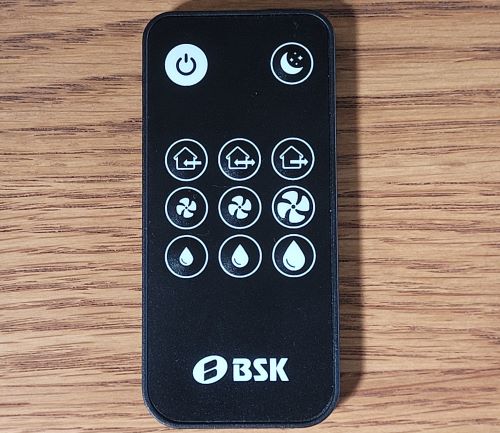
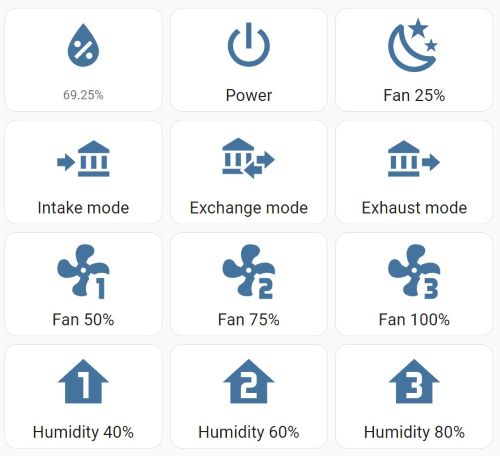
The code for the dashboard grid:
square: false
columns: 3
type: grid
cards:
- show_name: false
show_icon: true
type: button
tap_action:
action: toggle
entity: sensor.kitchen_temperature_humidity
show_state: true
- show_name: true
show_icon: true
type: button
tap_action:
action: toggle
entity: script.zephyr_power
name: Power
- show_name: true
show_icon: true
type: button
tap_action:
action: toggle
entity: script.zephyr_night_mode
name: Fan 25%
- show_name: true
show_icon: true
type: button
tap_action:
action: toggle
entity: script.zephyr_intake_only
name: Intake mode
- show_name: true
show_icon: true
type: button
tap_action:
action: toggle
entity: script.zephyr_exchange
name: Exchange mode
icon: mdi:bank-transfer
- show_name: true
show_icon: true
type: button
tap_action:
action: toggle
entity: script.zephyr_exhaust_2
name: Exhaust mode
icon: mdi:bank-transfer-out
- show_name: true
show_icon: true
type: button
tap_action:
action: toggle
entity: script.zephyr_fan_minimum
name: Fan 50%
- show_name: true
show_icon: true
type: button
tap_action:
action: toggle
entity: script.zephyr_exhaust
name: Fan 75%
- show_name: true
show_icon: true
type: button
tap_action:
action: toggle
entity: script.zephyr_fan_maximum
name: Fan 100%
- show_name: true
show_icon: true
type: button
tap_action:
action: toggle
entity: script.zephyr_humidity_minimum
name: ' Humidity 40%'
- show_name: true
show_icon: true
type: button
tap_action:
action: toggle
entity: script.zephyr_humidity_medium
name: Humidity 60%
- show_name: true
show_icon: true
type: button
tap_action:
action: toggle
entity: script.zephyr_humidity_maximum
name: Humidity 80%
Overall the device has worked out very well. The main drawback being IR control which gives Home Assistant no feedback on state making automations difficult. Internally the ZEPHYR is powered by an ESP microcontroller so possibly a custom firmware could be written to allow WiFi control. Unfortunately I don’t see myself doing that and as a niche product it’s unlikely anyone else will either.
